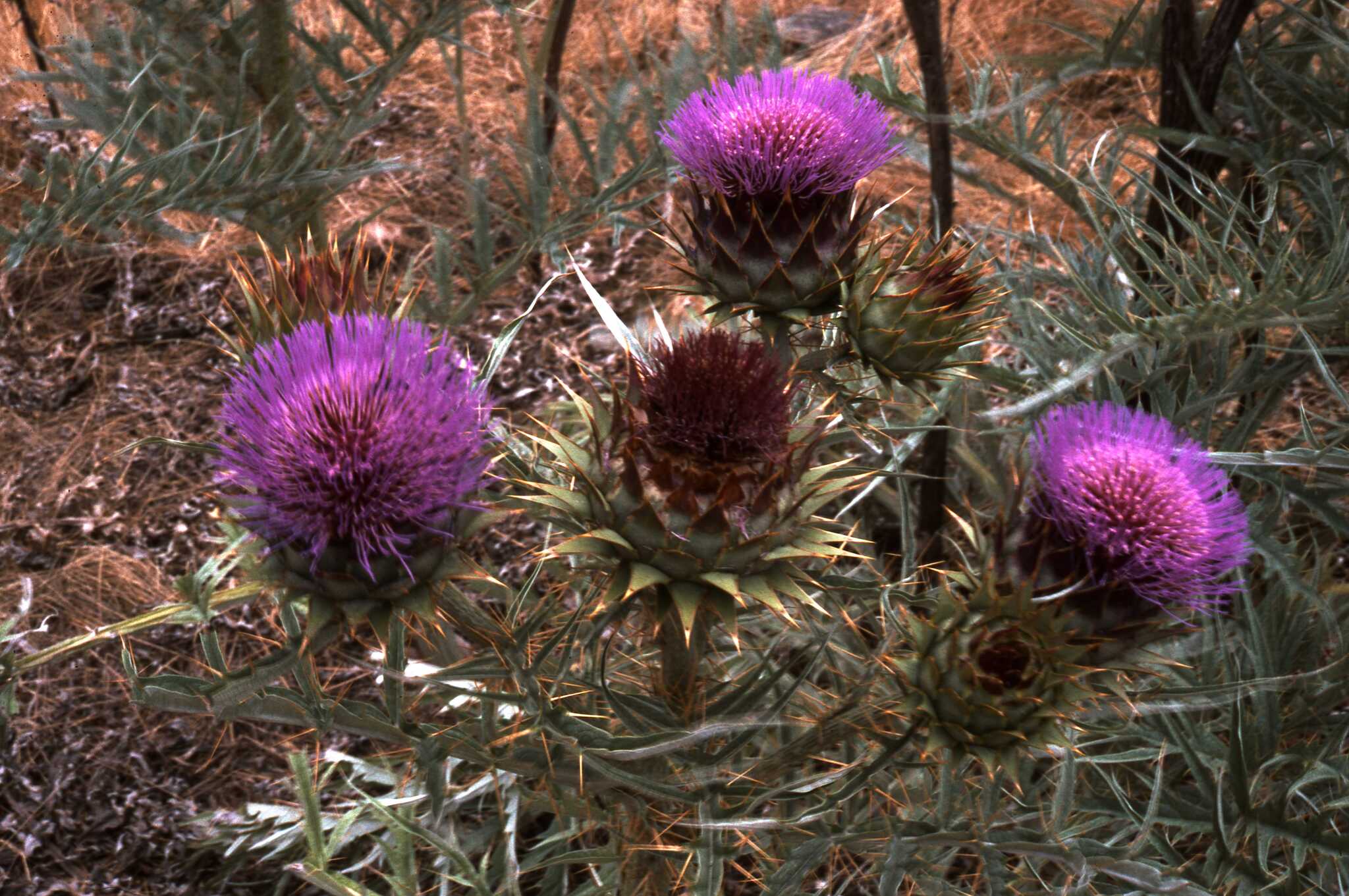
Perennial herb to 2 m tall, woolly. Stems erect. Basal leaves lanceolate, to 75 cm long, to 30 cm wide, twice divided, spiny. Stem leaves similar to basal leaves, decreasing in size up the stem. Capitula solitary or few together, to 5 cm across; spring to summer. Florets blue, lilac or white. Achenes 6-8 mm long, shiny. Pappus white.
Europe
The leaf bases and stalks are sometimes used as a vegetable.
C. scolymus L., Globe Artichoke, from Europe is a herb to 2 m tall with non-spiny, once divided leaves, large capitula, purplish blue florets and a pappus of brownish bristles. The young capitula (immature flower buds) are used as a vegetable. In Australia it became a commercial crop in the 1940s with Italian market gardeners around Melbourne being among the first commercial growers. Nowadays 90% of the Globe Artichoke crop in Australia is produced in Werribee South, Vic. The two major varieties are: 'Green Globe', which has a globular, greenish head and is early to mid-season; 'Dark Purple Globe', which has elongated purple heads with hooked scales and is late season. 'Imperial Star' is also listed as a Californian variety that may be grown under licence.
Source: (2002). Asteraceae. In: . Horticultural Flora of South-eastern Australia. Volume 4. Flowering plants. Dicotyledons. Part 3. The identification of garden and cultivated plants. University of New South Wales Press.
